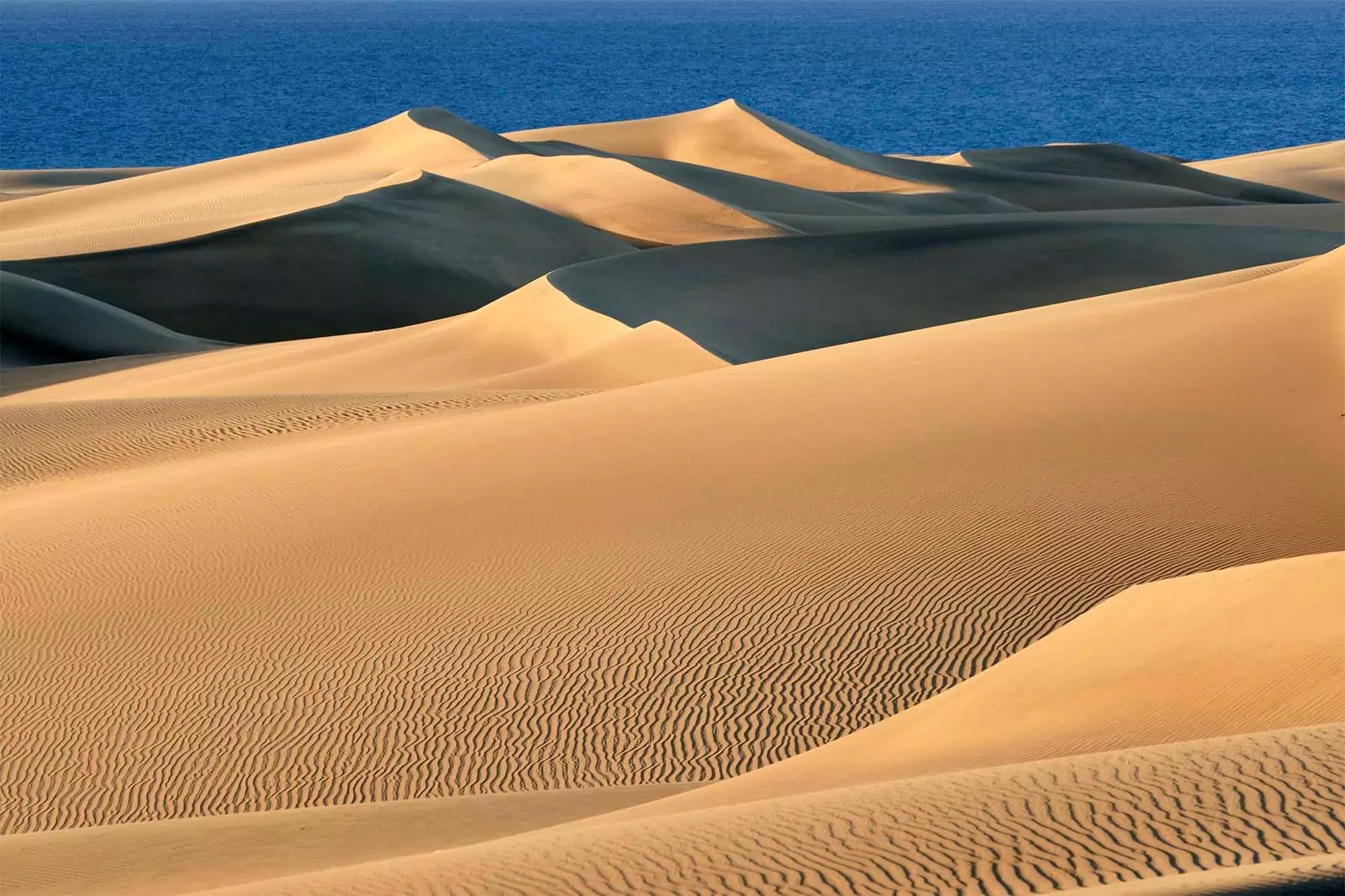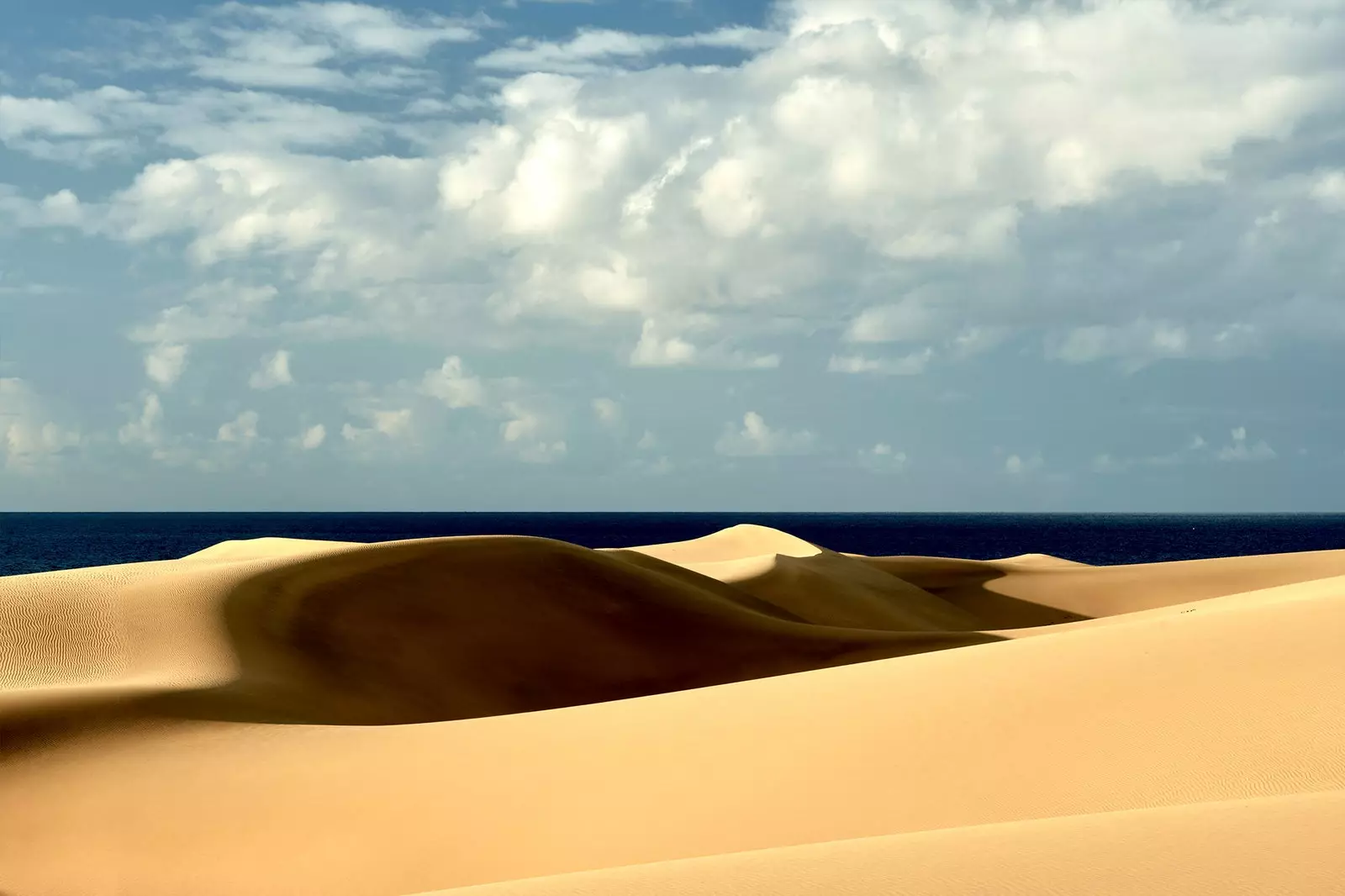
The dunes of Maspalomas, more beautiful than ever
A desert with a blue reward: that could be the definition of the dunes of Maspalomas, in Gran Canaria, a first division natural treasure due to its singularity and extension, a horizon that is difficult to forget with Playa del Inglés as its boiling point. And now it is living its best moment, according to those who know the most: "The most obvious change that the dune landscape has undergone during these weeks of confinement has been the appearance of undulations or ripple marks in the sand, so that the aesthetic improvement has been spectacular ", tells us Miguel Ángel Peña, director of the MASDUNAS project and of the Maspalomas Dunes Special Nature Reserve.
The project aims to solve the environmental problem which the place faces. Its causes are varied: due to the construction of the nearby urbanization of Playa del Inglés, which caused an alteration in the flow of the wind, the sand that comes out to the sea does not rejoin the dune cycle normally. In addition, they have lost swings (a shrub species endemic to the area), which favors erosion; Biodiversity has been reduced, and public use of the area, which is a Natural Park, has negatively altered the landscape.
"The flow of the sand has regularized, by not being trampled ", assures Peña about the current situation of the place. "We can affirm this conclusively, given that in the last eighteen months we have been closely monitoring the ecosystem thanks to the MASDUNAS project". So much so, that the expert assures: " Maspalomas is one of the most studied dune ecosystems in Spain, and we haven't seen her like this in at least 50 years".

The sand flow has regularized in the area
In addition, although, as Peña points out, "the flora and fauna have a different rhythm", so that the perception of changes is not so immediate, he has also appreciated that in the coastal lagoon associated with the dune ecosystem and in the adjoining palm grove ( popularly known as The Oasis), "the fauna is more confident". "It is to be hoped that the same thing will happen with the passage of migratory birds. We have every reason to hope that endangered species such as the Kentish Plover improve their reproductive success".
But what will happen when the confinement comes to an end... and the citizens spread the towel on the sand again? By then, it is expected that it will be possible to largely maintain the good condition that the dunes have acquired during this time: "During the project, we provided beacons and signs to the five paths that cross the dune ecosystem, so we are in a position to that visitors pass through them, refraining from trampling on the rest. The objective is to achieve the orderly use of natural resources. . To achieve this, the Cabildo de Gran Canaria, as the Nature Reserve's management body, is going to increase its information and surveillance work thanks to the hiring more staff ", assures the professional.
